Wadiy e Hajan, aka Betaab Valley in Kashmir, is one of the most beautiful and scenic spots near Pahalgam. The place gained traction after the shooting of the famous Bollywood movie, Betaab and since then, it has been more popularly termed Betaab Valley. By the time March arrives, the winter starts to subside from the area and the meadows get covered in blooming wildflowers and lush greenery. Visiting Betaab Valley in March presents a unique experience as the valley transitions from winter to spring, making it a truly unique experience for the visitors.
Weather In Betaab Valley In March
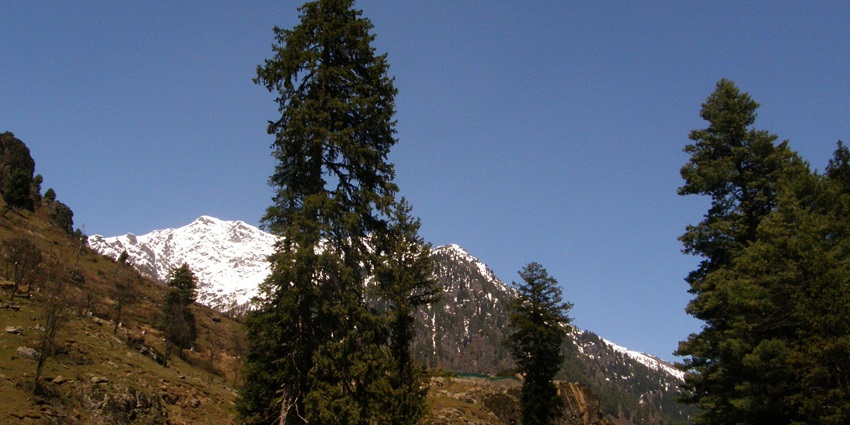
Photo: Harshruti / Wikimedia Commons
March in Betaab Valley is when the winter starts to fade and the winter chill is replaced with sunshine, clear skies and pleasant weather with temperatures between 5°C and 15°C. You might experience occasional snowfall in some of the higher altitudes from the valley. However, the good part is that the valley floor remains snow-free and is instead covered in lush greenery, which adds to the beauty of the place. However, the weather conditions can be unpredictable with sudden temperature dips so ensure you carry layers for protection and comfort.
Suggested Read: Bungus Valley In Kashmir
How To Reach

Photo: Gayatri Priyadarshini / Wikimedia Commons
There are various ways to reach Betaab Valley without any hassle, be it via flight, train or road.
Air: Srinagar International Airport is the nearest airport to Betaab Valley, located roughly 90 km from there. Once you step out of the airport, various taxis can take you to Pahalgam. From there, you can hire a local vehicle to reach Betaab Valley.
Rail: If you are travelling via train, Srinagar Railway Station is the nearest station to Betaab Valley, located around 85 km away. You can hire taxis or shuttle services until Pahalgam and then hire another local transport to reach Betaab Valley.
Roadways: If you’re seeking a scenic route, consider reaching Pahalgam by road. From major cities like Jammu (around 220 km) or Srinagar (around 87 km), well-maintained highways will lead to Pahalgam. Once you reach Pahalgam, Betaab Valley is only 10-12 km from there. If there’s snowfall in March, some of the roads leading to Betaab Valley might be closed for safety.
(Note: Once you reach the entry point of Betaab Valley, you’d have to pay an entrance fee of ₹100 per person to enter the valley. It is mandatory for every tourist.)
Things To Do In Betaab Valley In March
March is an ideal time to explore the natural beauty and outdoor activities that Betaab Valley offers. If you want to make the most out of your time there, ensure that you have a solid travel plan before you visit the valley.
1. Explore The Nature Trails
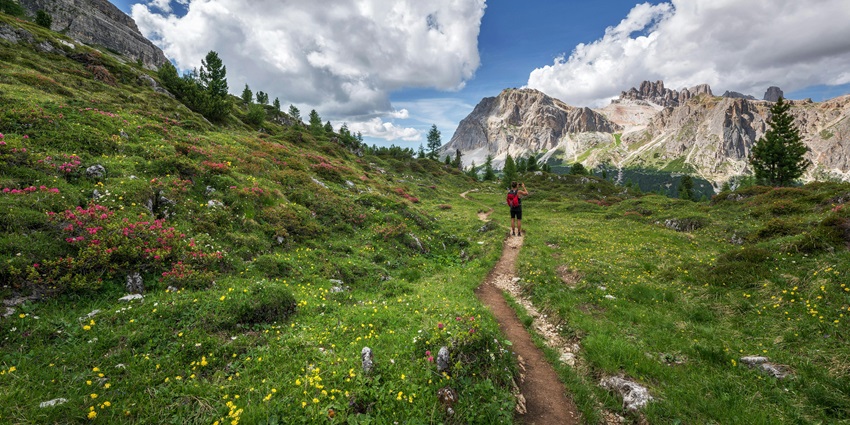
Photo: Krivec Ales / Pexels / Image For Representation Only
The best way to explore the beauty of Betaab Valley is by exploring the nature trails in the surroundings. The valley is crisscrossed with numerous paths that lead through verdant meadows, dense forests, and along clear streams, adding to the experience further. In March, the snow already starts to melt, unveiling the beauty of the lush green meadows. If luck is on your side, you may witness early spring blossoms that are the peak beauty of the valley and the nature trails around.
Suggested Read: A Guide To Baisaran Valley In Winter
2. Explore Lidder River

Photo: Akshey25 / Wikimedia Commons
The Lidder River, which flows through Betaab Valley, is a major attraction. Since March is when the snow starts melting, the adjacent river is swollen as an aftermath. However, it adds to the gushing flow of the water, creating a beautiful spectacle to witness. You can relax, soak in the views and embrace the peace that comes with this experience.
3. Indulge In Adventure Sports
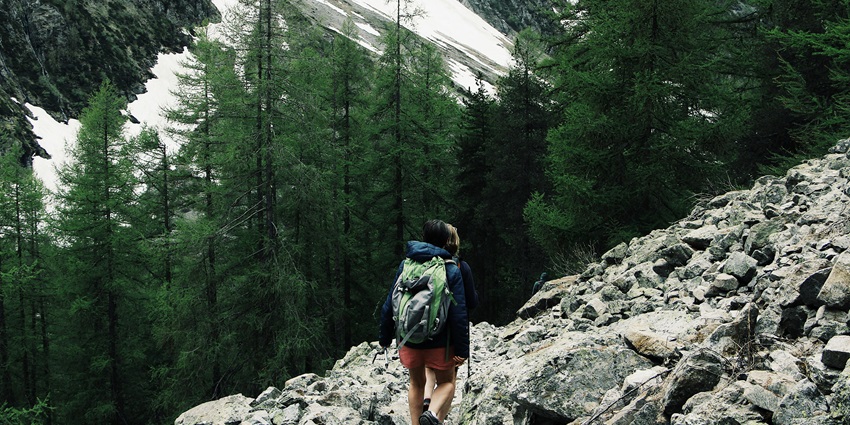
Photo: Maël BALLAND / Pexels / Image For Representation Only
Unlike Pahalgam and Aru Valley which are known for a variety of unique adventure activities like paragliding, etc., Betaab Valley stands out for its laid-back charm. One of the most popular adventures you can embark on is trekking. There are several trails around, ranging from easy to challenging. Also, the terrain of Betaab Valley comprises gentle slopes and rugged areas, adding to the adventure further. March, with its moderate weather and melting snow, is an excellent time for trekking, providing clear views and relatively stable conditions.
Suggested Read: Adventure Sports In Kashmir
4. Bird Watching
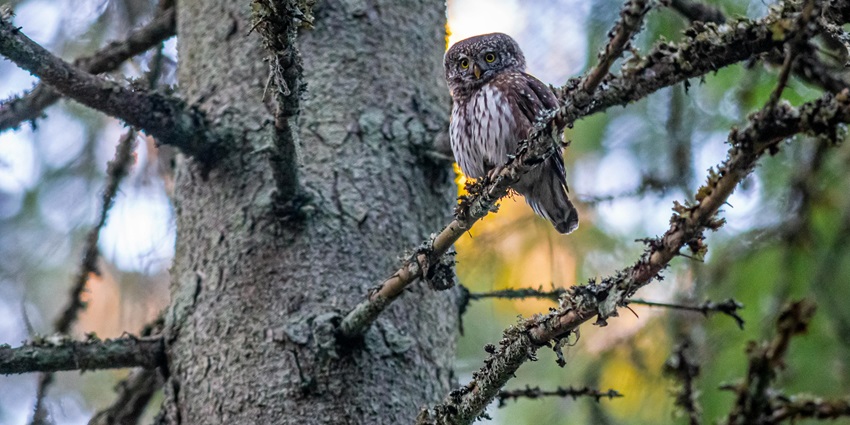
Photo:Erik Karits / Pexels / Image For Representation Only
For a less hectic experience around Betaab Valley, indulge in a bird-watching experience. It is truly an experience that you can’t forego. Lay down a blanket and relax to witness the birds in the surroundings. Some of the exotic birds might be too high up in the trees in the dense forest, so ensure that you have your binoculars for clear views. The serene environment and the thrill of spotting rare birds make bird watching a rewarding activity there.
5. Star Gazing While Camping
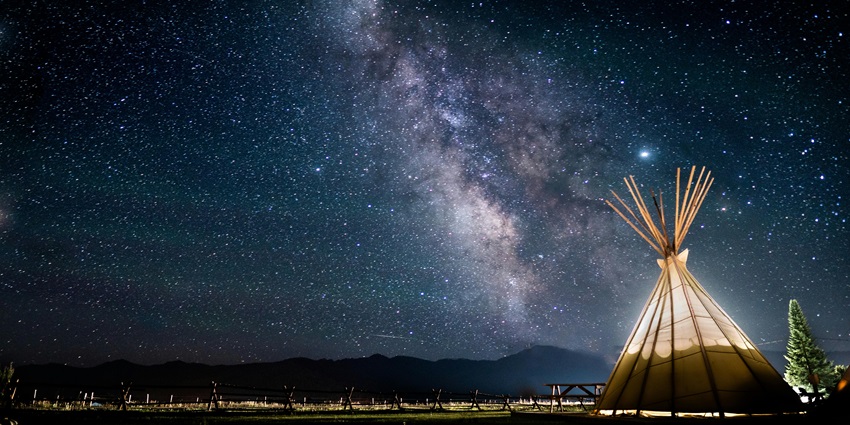
Photo: Chait Goli/ Pexels / Image For Representation Only
Camping is yet another popular activity in Betaab Valley. There aren’t professional tour operators, so bring your camping gear and essentials. You can pitch your tent anywhere in the valley, ensuring that you aren’t venturing too deep into the forest since that poses risks of wildlife interaction at night. However, the best part of camping in Betaab Valley is the stargazing experience at night time.
Suggested Read: Camping In Pahalgam
Places To Visit Around Betaab Valley In March
Beyond exploring the beauty of Betaab Valley, there are a few other spots around that are equally popular and mesmerising to look at.
1. Pahalgam
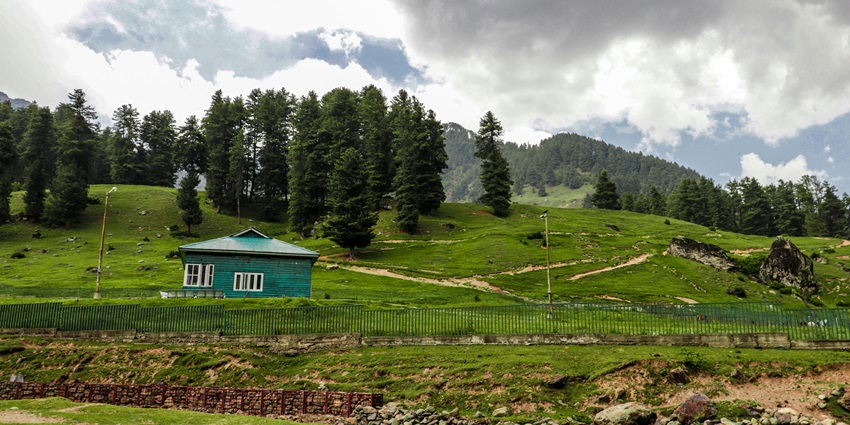
Photo: Shail Sharma / Unsplash
With a blend of landscapes and recreational activities, Pahalgam is a must-visit spot from Betaab Valley in March. You can witness snow in some parts and lush green meadows in some parts of Pahalgam, creating a striking view of two different worlds. From the main town, you can also plan a visit to the nearby Aru Valley, Baisaran, and the Lidder River.
Distance From Betaab Valley: 15 km
2. Aru Valley
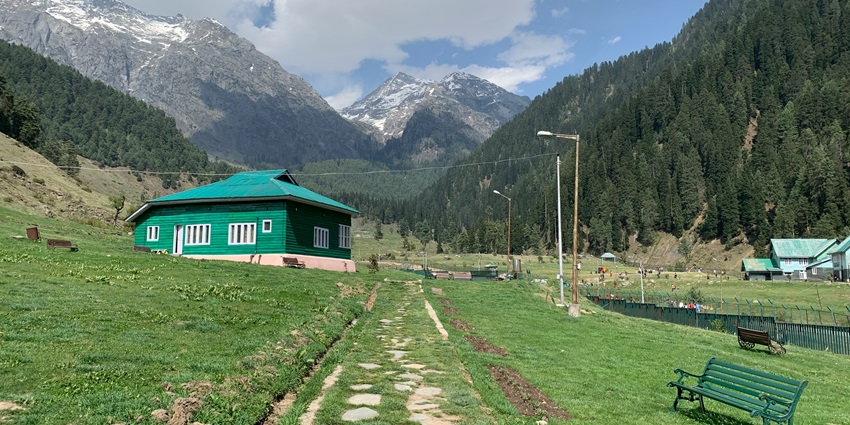
Photo: sagar nandasana / Unsplash
Your trip to Betaab Valley is incomplete without visiting Aru Valley as both are named synonymously. Located at an elevation of 2,424 meters, it offers stunning views of the landscape around. Aru Valley is one of the best locations for camping and trekking. The drive to Aru Valley from Betaab Valley is scenic, with panoramic views of the mountains and valleys, adding to the experience further.
Distance From Betaab Valley: 27 km
Suggested Read: Aru Valley In Winter
3. Chandanwari
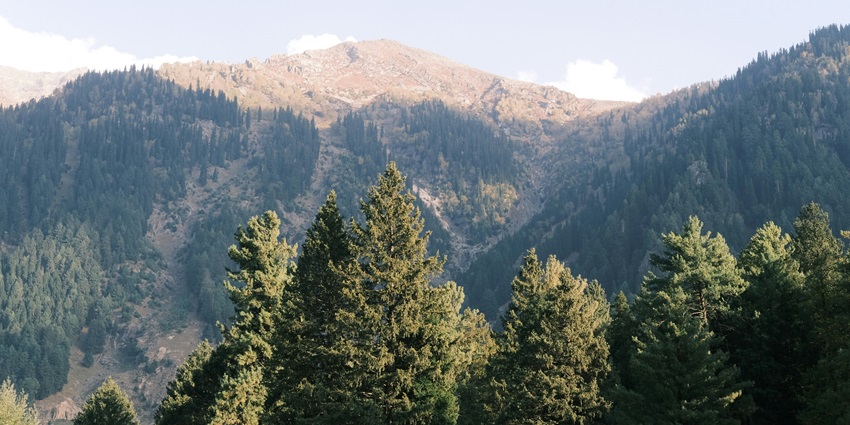
Chandanwari is the starting point of the trek to Amarnath temple and is renowned for its iconic snow bridge. Unlike Betaab Valley, Chandanwari is covered in snow in March, making it a picturesque spot for tourists to visit and explore. You can indulge in snow activities like sledging and snowball fights there.
Distance From Betaab Valley: 16 km
4. Baisaran
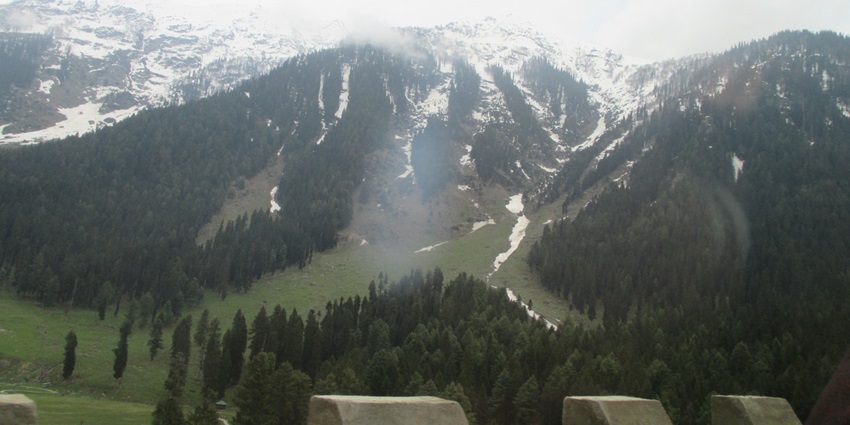
Photo: Billjones94 / Wikimedia Commons
Baisaran, also known as ‘Mini Switzerland,’ is a beautiful meadow surrounded by dense pine forests and snow-capped mountains. It serves as a base camp for the Tulian Lake trek. Beyond exploring the valley itself, you can spend your time exploring the local villages too. Some of the places around Baisaran you can explore are Dabyan, Pahalgam Old Village, and Deon Valley Point.
Distance From Betaab Valley: 5 km
Suggested Read: Best Places To Visit In Jammu For A Scenic Getaway
5. Tulian Lake
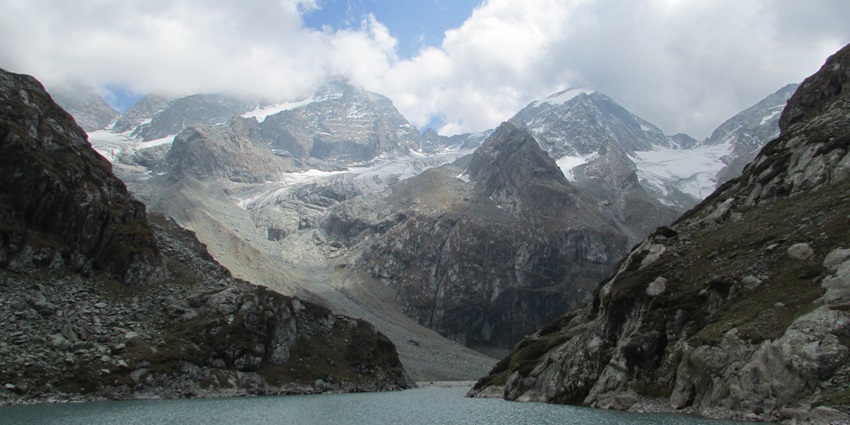
Photo: Raqueeb Mir / Wikimedia Commons
Tulian Lake is a high-altitude lake located at an elevation of 3,684 meters. The lake remains frozen in March, surrounded by snow-covered peaks. The best part about visiting Tulian Lake is the trekking experience. It is a moderate-level trekking experience and you start from Baisaran Valley and continue trekking through rugged terrains to reach this high-altitude lake.
Distance From Betaab Valley: 34 km
6. Lidder Valley

Photo: Arpita baksi / Wikimedia Commons
Replete with towering peaks, lush green meadows, and crystal-clear rivers, Lidder Valley beckons travellers with its breathtaking beauty. Situated in the heart of the Anantnag district, the valley offers dramatic landscapes and stirring activities. The highlight of Lidder Valley is its shimmering Lidder River, originating from the Kolahoi Glacier at an elevation of 4,653 metres. Here, you can try trekking, camping, mountaineering, and river rafting for an exhilarating experience.
Distance From Betaab Valley: 5 km
Suggested Read: Lolab Valley In Winter
7. Sheshnag Lake
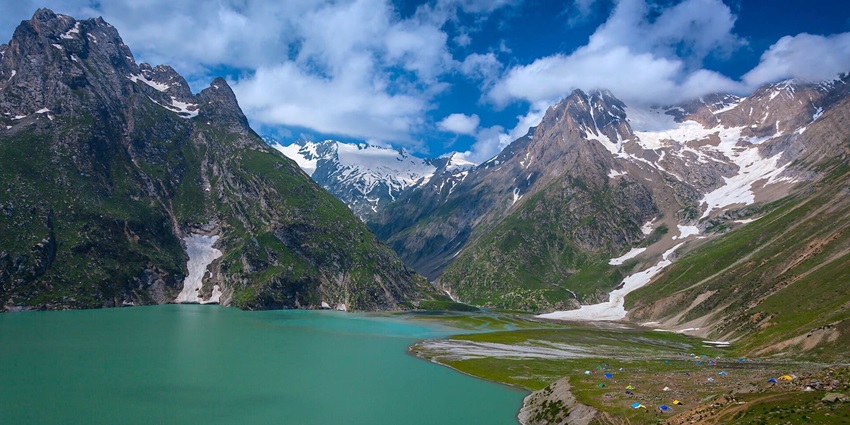
Photo: Photos Worldwide / Wikimedia Commons
Sheshnag Lake is a scenic abode surrounded by rolling valleys, snow-clad mountains, lush green meadows, and dense pine trees. Deriving its name from the mythical serpent deity in Hindu mythology — Sheshnag, this river is a sacred gem situated in the Pahalgam region of Jammu and Kashmir. The verdant banks of the lake are a key stopover for devotees en route to the iconic Amarnath Cave. A haven for adventure seekers, you can indulge in trekking, fishing or picnicking along the banks of this pristine lake.
Distance From Betaab Valley: 15 km
8. Overa-Aru Wildlife Sanctuary

Photo: Byron Johnson / Unsplash / Image For Representation Only
A paradise for photographers, wildlife enthusiasts, and nature lovers, Overa-Aru Wildlife Sanctuary is must must-visit attraction near Betaab Valley. This wildlife sanctuary is home to a variety of wildlife and birds including the Egyptian Vulture, Kasmir flycatcher, Kasmir stag, Asiatic black bear, Kashmir musk deer, and more. Overa-Aru Wildlife Sanctuary is bounty in nature’s panoramic beauty. This sanctuary stretches across Aru Valley in Pahalgam, Jammu and Kashmir and offers a once-in-a-lifetime experience to its visitors.
Distance From Betaab Valley: 13 km
Suggested Read: Surinsar Mansar Wildlife Sanctuary
9. Pahalgam Golf Course
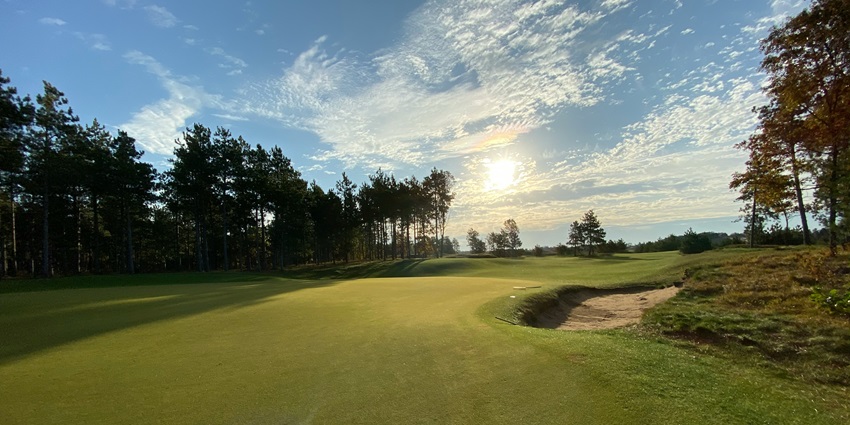
Photo: Sly Dizzle / Unsplash / Image For Representation Only
Pahalgam Golf Course, set against the backdrop of snow-capped mountains and lush greenery, is one of the scenic places to explore near Betaab Valley in March. Situated at an altitude of 7,200 feet above sea level, this 18-hole golf course seamlessly blends nature’s serenity and adventure. Pahalgam Golf Course is a perfect retreat for both nature lovers and adventure junkies. In addition to golfing, you can try trekking, horse riding, and trout fishing here for a thrilling experience.
Distance From Betaab Valley: 5 km
10. Lidder Amusement Park
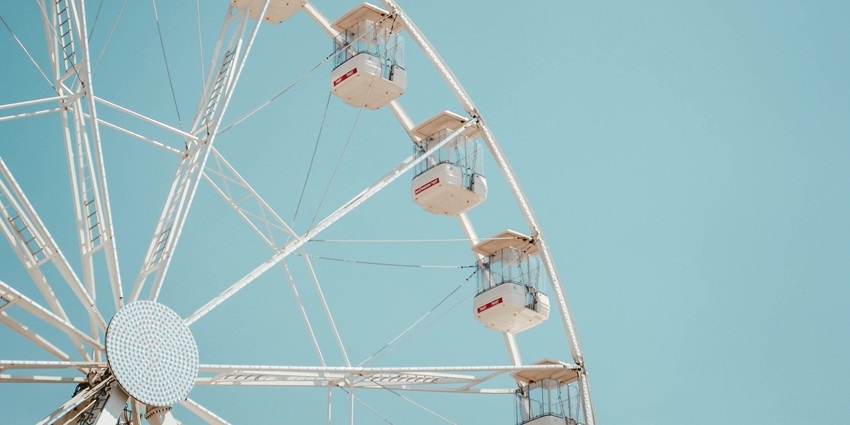
Photo: Nik / Unsplash / Image For Representation Only
Lidder Amusement Park, a recreational hub boasts a fusion of adventure and breathtaking natural beauty. This park has manicured gardens, thrilling rides, and fun-filled activities, perfect for families with children. Here, you can enjoy roller coaster rides, carousels, and bumper cars witnessing the serene natural beauty surrounding this park. Also, you can walk through the lush lawns or picnic amidst the tranquil ambience of the park.
Distance From Betaab Valley: 3 km
Suggested Read: Adventure Sports In Ladakh – Planning The Ultimate Trip
Betaab Valley in March offers a unique blend of winter and spring. So, if you are a nature lover or adventure enthusiast who wants a taste of dual natural wonders, ensure that you plan your Kashmir trip with TripXL in March. A well-planned itinerary is necessary if you want to make the most out of your time at Betaab Valley.
Cover Photo: Syed Qaarif Andrabi / Unsplash


 WhatsApp
WhatsApp
 Twitter
Twitter









